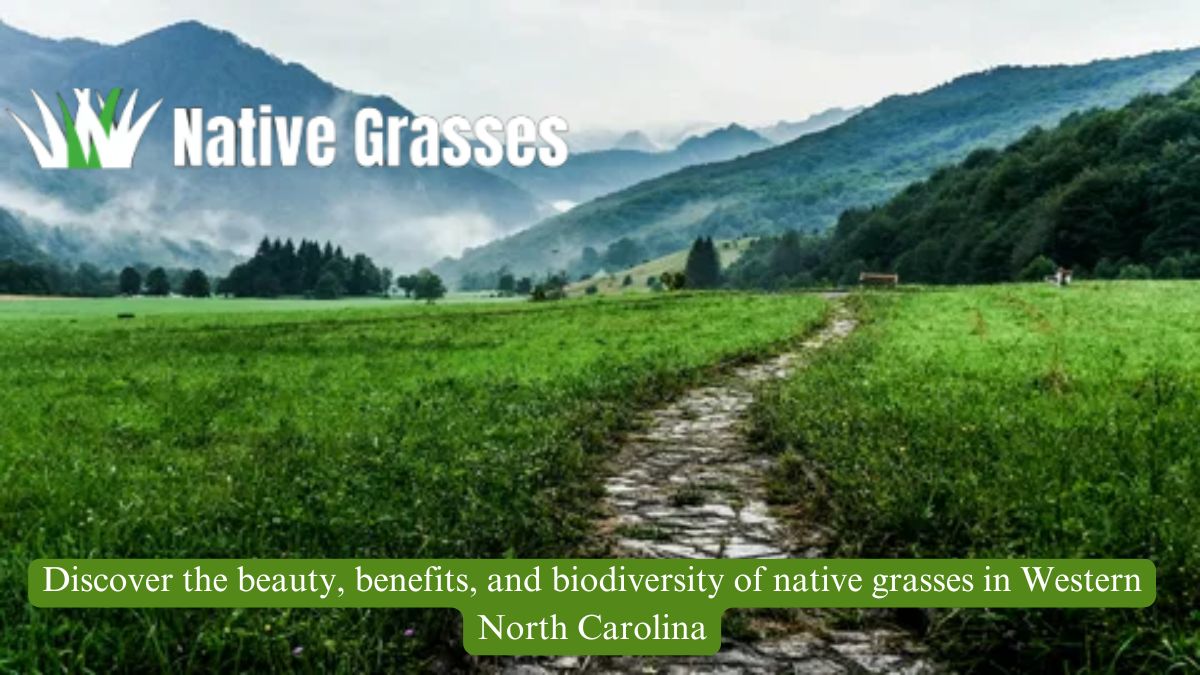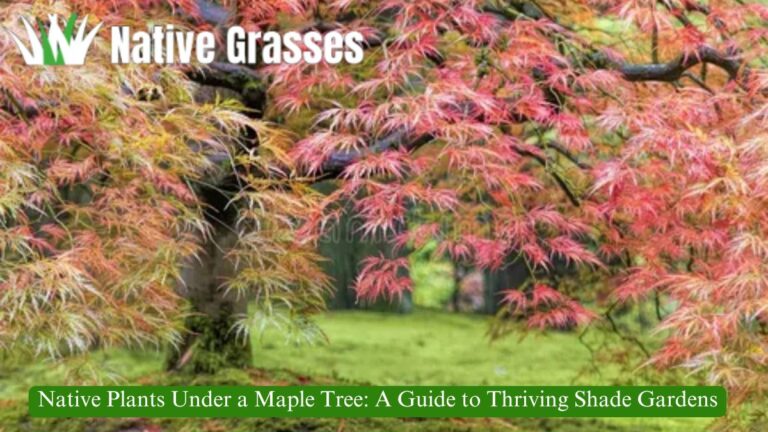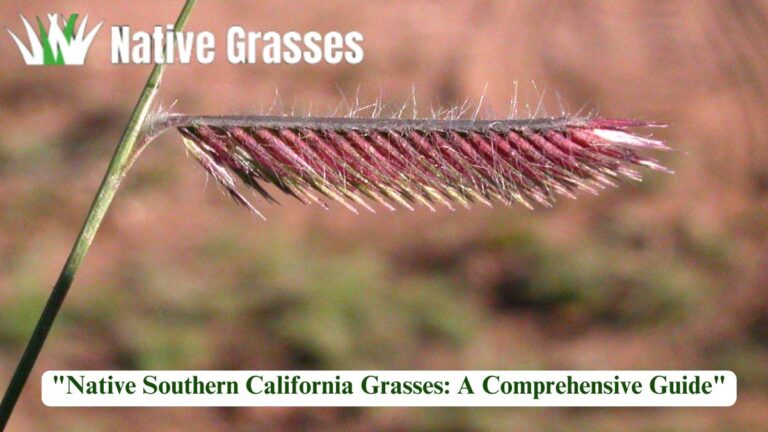Exploring Native Grasses of Western North Carolina: Beauty, Benefits, and Biodiversity

Native grasses are unsung heroes of Western North Carolina’s vibrant landscapes. From stabilizing soil on rugged mountain slopes to supporting diverse ecosystems, these grasses offer both practical and aesthetic value. Whether you’re a homeowner, gardener, or conservation enthusiast, understanding the importance of native grasses can help you appreciate and integrate them into your surroundings.
This article dives into the ecological roles, benefits, and popular varieties of native grasses in Western North Carolina, along with tips for incorporating them into your landscape.
The Role of Native Grasses in Western North Carolina’s Ecosystem
Biodiversity Support
Native grasses are the foundation of healthy ecosystems, providing essential shelter and food for wildlife. Their dense tufts and towering stems create habitats for pollinators, birds, and small mammals.
- Pollinators: Species like monarch butterflies rely on native grasses like switchgrass (Panicum virgatum) for cover and reproduction.
- Birds: Eastern Meadowlarks and other ground-nesting birds use these grasses for shelter and nesting materials.
- Small Mammals: Rodents and rabbits find safety within the thick growth, contributing to a balanced food chain.
Erosion Control
Western North Carolina’s mountainous terrain is prone to erosion, especially after heavy rainfall. Native grasses have extensive root systems that:
- Anchor soil, preventing landslides.
- Improve water infiltration, reducing runoff.
- Stabilize streambanks and slopes naturally.
Carbon Sequestration
Beyond supporting local wildlife and stabilizing soil, native grasses help combat climate change by storing carbon underground. Their deep roots lock carbon dioxide into the soil, contributing to long-term climate resilience.
Quote: “Native grasses play a key role in both ecological preservation and climate mitigation,” says Dr. Susan Carter, an ecologist specializing in Appalachian habitats.
Common Native Grasses of Western North Carolina
Big Bluestem (Andropogon gerardii)
- Description: This tallgrass species grows up to 8 feet, with bluish stems and seed heads resembling a turkey’s foot.
- Ecological Benefits: Provides habitat for pollinators and nesting birds. Its roots extend over 12 feet, making it excellent for erosion control.
- Cultural Significance: Known as “the king of prairie grasses,” it was historically significant in Indigenous agriculture.
Switchgrass (Panicum virgatum)
- Description: A perennial grass with feathery seed heads, reaching heights of 4-6 feet.
- Uses: Often planted for erosion control and as biofuel feedstock.
- Interesting Fact: Switchgrass is being studied for its potential in carbon capture and renewable energy.
Little Bluestem (Schizachyrium scoparium)
- Description: Compact and drought-resistant, this grass features silvery-blue blades and turns vibrant orange in fall.
- Benefits: Perfect for ornamental landscapes due to its striking seasonal colors.
- Wildlife Value: Offers seeds for birds like sparrows during winter months.
Indian Grass (Sorghastrum nutans)
- Description: Golden plumes and a height of up to 7 feet make this grass stand out in any meadow.
- Ecological Role: Attracts pollinators such as bees and butterflies while supporting ground-nesting birds.
- Cultural History: Indigenous communities used Indian grass for weaving and ceremonial purposes.
| Grass Name | Height | Root Depth | Key Benefits |
| Big Bluestem | 6-8 ft | 12+ ft | Erosion control, habitat |
| Switchgrass | 4-6 ft | 8-10 ft | Carbon capture, biofuel |
| Little Bluestem | 2-4 ft | 6-8 ft | Drought tolerance, beauty |
| Indian Grass | 5-7 ft | 10-12 ft | Pollinator support |
Benefits of Incorporating Native Grasses
Low Maintenance
Native grasses thrive in their natural environment, requiring minimal care:
- Watering: Once established, they need little to no additional irrigation.
- Fertilizing: Their adaptability to local soil eliminates the need for chemical fertilizers.
- Pest Resistance: Native grasses are less susceptible to pests and diseases than exotic species.
Resilience to Local Climate
Western North Carolina’s weather includes hot summers, cold winters, and varied rainfall. Native grasses are well-suited to these conditions:
- Survive droughts with deep root systems.
- Withstand heavy rainfall without erosion or flooding.
- Adapt to poor, rocky, or clay soils.
Aesthetic Appeal
Native grasses bring year-round beauty to any landscape:
- Spring and Summer: Lush green growth.
- Fall: Warm hues of gold, red, and orange.
- Winter: Textural interest with frost-covered seed heads.
Tip: Combine native grasses with wildflowers like black-eyed Susans for a vibrant, pollinator-friendly meadow.
How to Incorporate Native Grasses into Landscapes
Design Tips for Home Gardens
- Natural Borders: Use taller grasses like big bluestem to create privacy screens.
- Erosion-Resistant Slopes: Plant grasses on hillsides to prevent soil erosion.
- Wildlife Gardens: Pair grasses with native shrubs and wildflowers to attract birds and butterflies.
Planting and Care
- Timing: Plant in spring or fall for the best root establishment.
- Spacing: Allow 12-18 inches between plants to prevent overcrowding.
- Maintenance: Trim back dead growth in late winter to encourage new growth.
Sourcing Native Grasses
Finding native grasses can be easy if you know where to look:
- Local nurseries specializing in native plants.
- Online retailers offering region-specific seeds.
- Avoid invasive species like Miscanthus and stick to verified native varieties.
Conservation Efforts and Community Involvement
Organizations Supporting Native Landscapes
Numerous groups in Western North Carolina are championing native grass conservation:
- North Carolina Native Plant Society: Provides resources and workshops on native landscaping.
- Blue Ridge Forever Coalition: Focuses on preserving natural habitats through restoration projects.
- Local Extension Offices: Offer free advice and resources tailored to your region.
How You Can Help
- Volunteer for community planting events.
- Advocate for native grasses in public spaces like parks and schools.
- Educate others about the ecological benefits of using native plants.
Conclusion
Native grasses are not just plants; they’re the backbone of Western North Carolina’s ecosystems. Their ability to stabilize soil, support wildlife, and reduce maintenance costs makes them a valuable addition to any landscape. By choosing native grasses, you’re investing in the beauty, biodiversity, and sustainability of your region.
Take a step toward restoring natural habitats by incorporating native grasses into your garden. With their undeniable benefits and timeless charm, these grasses will enhance your landscape while supporting the environment for generations to come.
FAQs
What are the native grasses of Western North Carolina?
Native grasses are grass species that naturally occur in Western North Carolina, thriving in its unique climate and soil conditions.
Why are native grasses important for biodiversity?
They support local ecosystems by providing food and habitat for native wildlife, insects, and pollinators.
What are the aesthetic benefits of native grasses?
These grasses enhance landscapes with their natural beauty, adding texture, movement, and seasonal interest.
Can native grasses help with erosion control?
Yes, their deep root systems stabilize soil, prevent erosion, and improve water infiltration.
Are native grasses low-maintenance?
Absolutely! They require less water, fertilizer, and mowing compared to non-native species.






